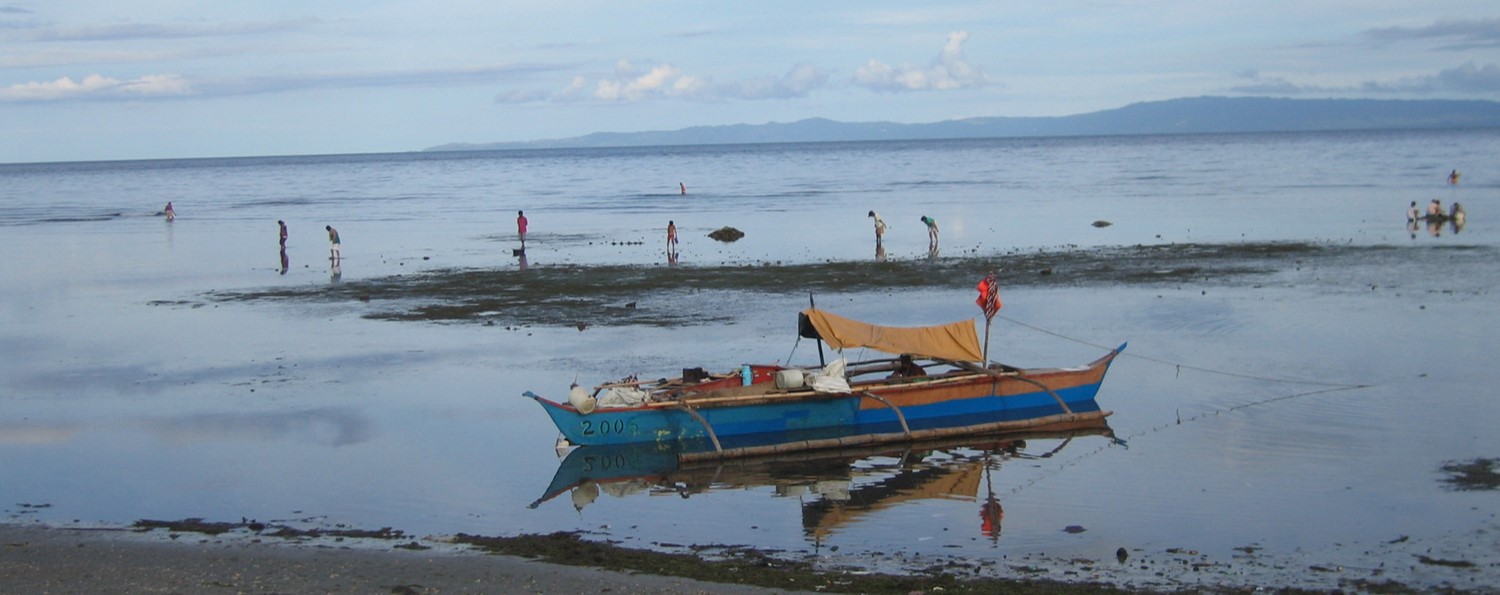Fishing in the Philippines
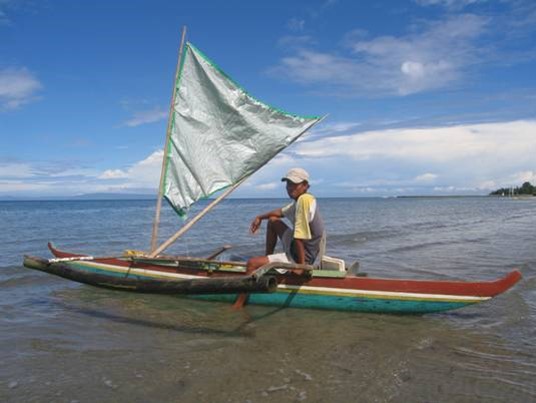 |
On Thursday, 7 February 2019, Magne Knudsen of FASS, UBD, gave a seminar entitled "Changing tides: Re-configuration of a low-capital, high-skill fisheries in the Central Visayas" in which he described his research on traditional knowledge and current practices by fishermen in Sibulan in the south of Negros Islands in the Philippines. With a significant decline in the resource base in recent decades, only fishers with advanced skills and fine-grained knowledge of local fishing grounds are able to catch enough fish, and the right kind of fish, to secure a decent return. |
Small-scale fishing is diverse, and some methods of fishing are much more challenging than others. In addition to skills in fishing techniques and how to use them in different places, knwledge about timing is vitally important. The fishermen need to know about the links between changes in fish behaviour, sea currents, the lunar cycle and monsoon winds. Some of the kinds of skills and knowledge needed by the fishermen include: |
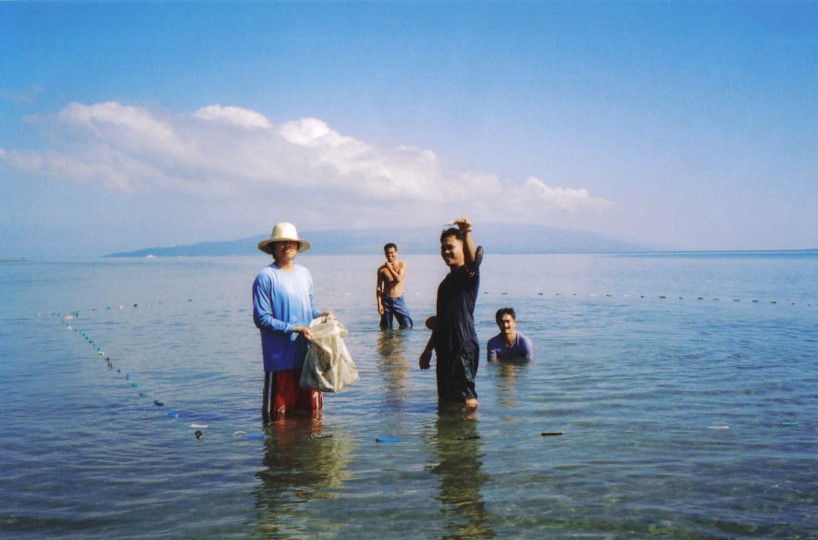 |
- Material culture: boatbuilding, fishing gear
- Timing: f ishing conditions are better during particular months, moon phases and tidal stages
- Fish behaviour (often species specific)
- Aggregation: spawning cycles: migration patterns; what fish feed on and how they feed
- Place-specific knowledge: the terrain and ecology below the sea
Some fishing techniques include:
- lasdak: 240 to 320 hooks with strings of silky cloth in different colours
- taktakon: 50 to 20 hooks and floater; mackerel or squid as bait; heavy sinker
- pangnokos: one artificial shrimp hook, 250 gram stone tied to palm leaf as sinker
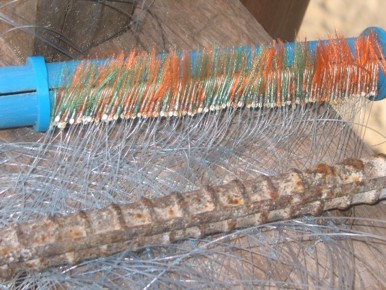
lasdak |
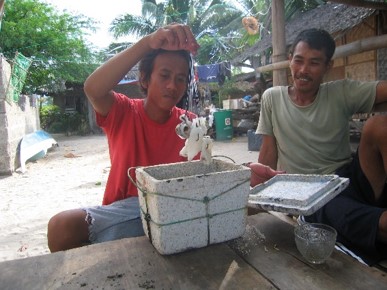
taktakon |
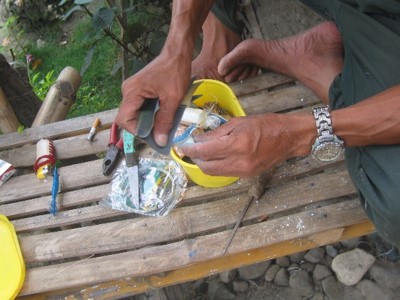
pangnokos |
During periods of full moon and new moon, there are more seashells available in the shallows. Many women, children and men go gleaning during the big low tides.
